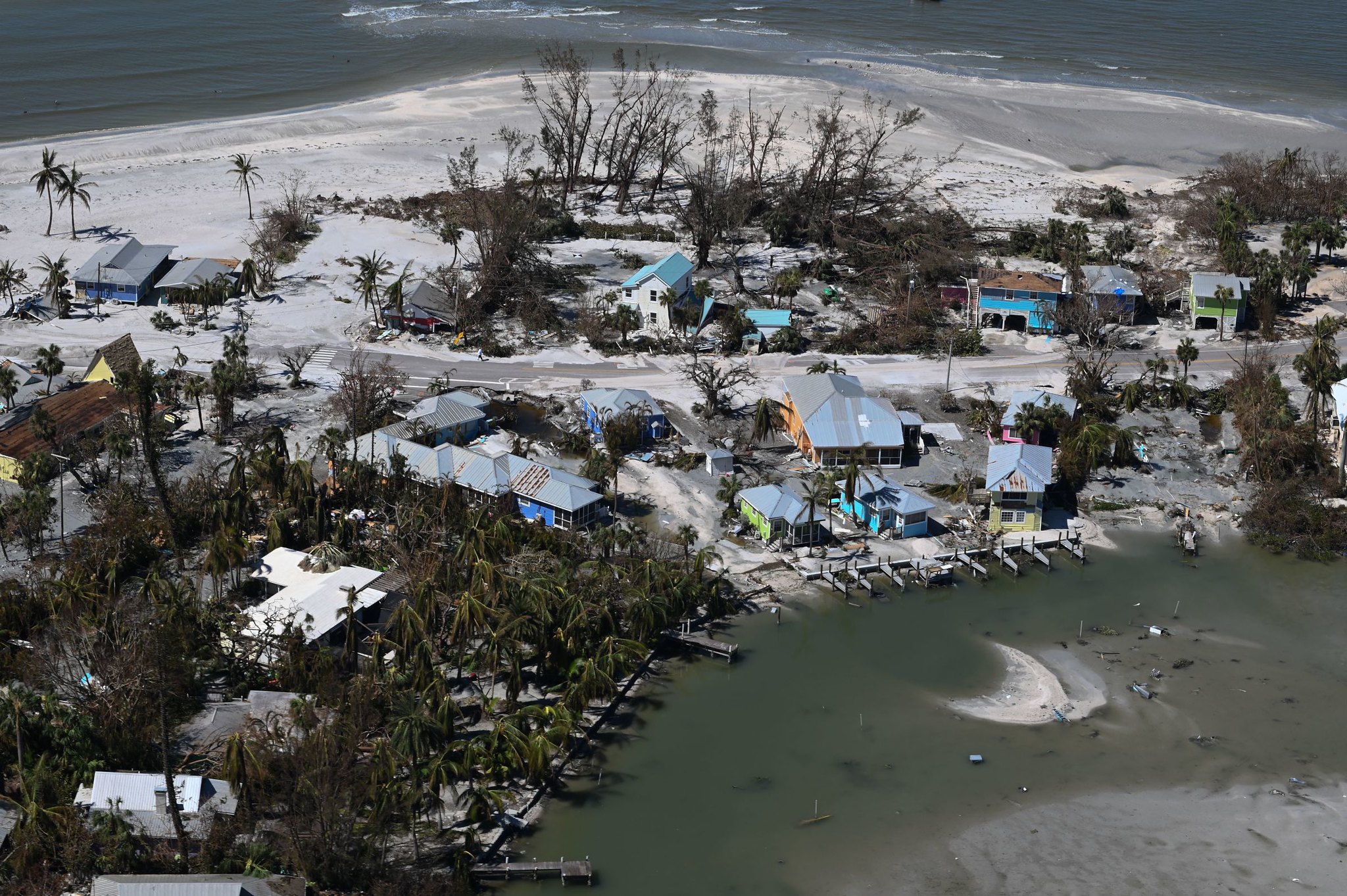Excerpt:
As more older Americans move to the coasts, rising seas are wiping out their homes — and retirement dreams.
Martha Shaw was ready. As forecasters in September 2022 warned of a storm bearing down on Florida’s Gulf Coast, she grabbed a blanket and her cane, stuffed a suitcase with clothes and loaded a kennel for her toy poodle, Andre, into her silver SUV. Shaw, who had just turned 84, had been through this before. Hurricane Charley in 2004 had damaged the roof and siding on her mobile home in Fort Myers. But inside, everything had stayed dry.
This time, Shaw planned to drive inland to a rest stop on Interstate 75, sleep in her car and return the following morning. But as warnings about Hurricane Ian grew more dire, she realized her plan was unsafe. In the pelting rain, she drove instead to an emergency shelter lined with cots and watched out a window as the Category 4 monster raged.
Ian’s winds approached 150 miles per hour, churning up a massive 14-foot storm surge. Water roared inland. Flooding overtopped houses, crumpled bridges and drove boats across roadways. More than 60 people drowned in the storm — some in their cars, others in their attics. Watching a small part of this disaster unfold, Shaw felt she was floating outside her body. “I was numb, in limbo,” she later told me, her voice cracking. “I didn’t know how to feel.”
When the skies finally cleared and a friend drove Shaw back to the plot she owned at Sunshine Mobile Village, Shaw couldn’t believe her eyes. Half a mile inland from Fort Myers Beach, Ian had pushed fetid water nearly to her ceiling. The place was uninhabitable.
I met Shaw, 85, last September, a year to the day after Ian hit. I liked her immediately. She’s tall and funny, with an open smile, a big laugh and the quiet confidence of someone who spent her career ruling elementary school classrooms. When I asked about the storm, she sobbed briefly, so I apologized. “Oh, you didn’t upset me,” she said, graciously. “I mean, that’s how it hits me: in a little wave.”
Stories like Shaw’s have always been part of living in coastal areas. But today those stories are growing more common, especially for people over 50. Flooding of all kinds is increasing along much of the nation’s shoreline. Due to rising sea levels tied to climate change, high-tide “nuisance” flooding now occurs three to nine times more often than it did 50 years ago, according to the National Oceanic and Atmospheric Administration (NOAA). At the same time, hurricanes are getting stronger, bringing more rain and creating surges that push farther inland than ever. This means more damaged property, more shattered and lost lives…









